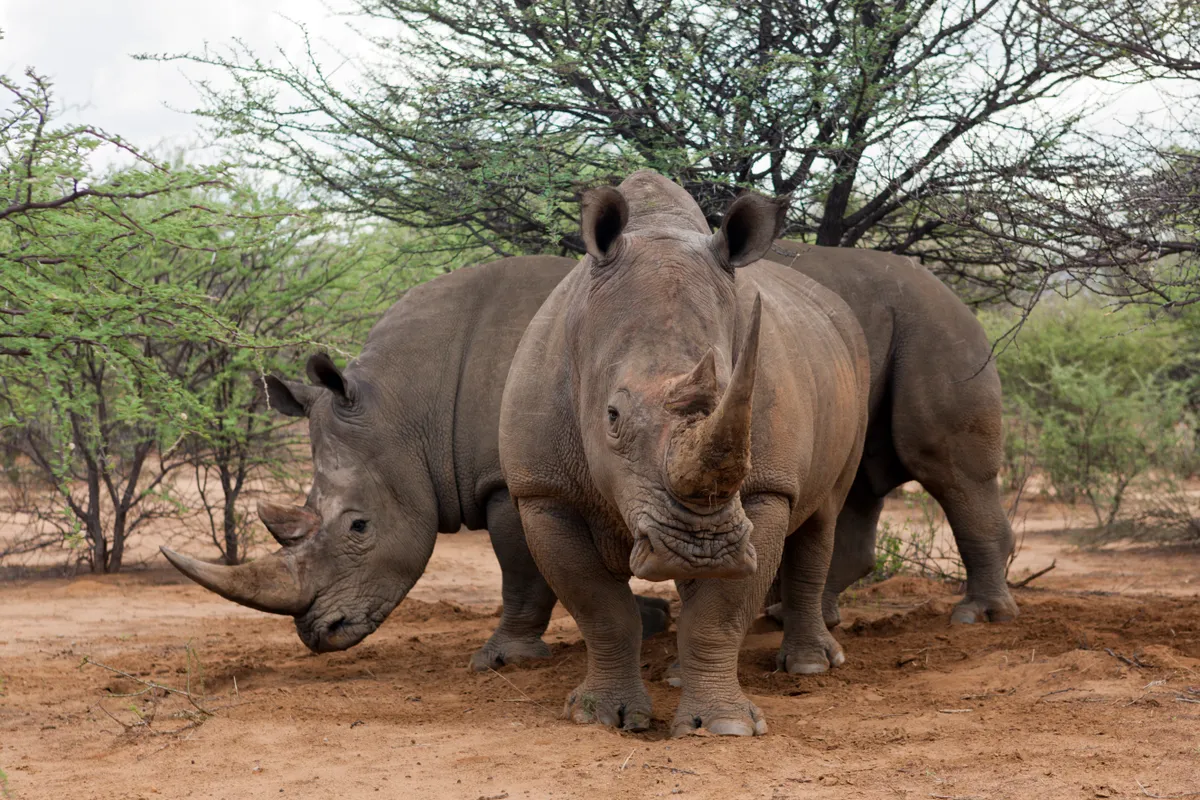There’s good news for rhinos. The latest poaching figures have just been released and half as many were killed illegally by poachers during the four-year period that ran from 2018 to 2021 than the previous four-year period.
So why aren’t we dancing in the streets? Well, first, poaching is still rampant. There were 2,707 reported deaths during those four years – and no one is going to celebrate an average of two rhinos being killed every day. Also, while poaching has declined overall, it is still too high for populations to recover (and continues relentlessly in some hotspots – South Africa’s Kruger National Park, in particular).
Despite those occasional glimmers of hope, we can never afford to drop our guard
Second, we’ll never be able to declare rhinos safe. (Unfortunately, the same applies to most other endangered species – because conservation never ends.) The best we can do is to hold against the tide. We can never say “Right, that’s one species saved, now let’s save another”. Sadly, the same threats (and/or new ones) will always be lurking round the corner.
Rhinos are perhaps the ultimate example of what I call rollercoaster conservation. Poaching is up, poaching is down; numbers are up, numbers are down; one country has cut poaching almost to nil, in another country it’s back with a vengeance. We never win. The good news, and the bad news, comes and goes in cycles.
In other words, triumphs are typically short-lived. The recovery of the southern white rhino, for example, is one of the biggest conservation success stories of all time. Thanks to intensive conservation efforts it went from near-extinction, with a tiny population of fewer than 50 individuals in 1895, to more than 21,000 a decade ago. But now it’s on the decline once again.
The only long-term solution is to eliminate demand for rhino horn
It’s a rollercoaster that has lasted more than 150 years. During the European colonial era in Africa and Asia, uncontrolled trophy hunting was largely to blame (everyone from President Roosevelt to Ernest Hemingway shot rhinos). But then hunting for their horns took a terrible toll: those magnificent horns, which have helped to protect rhinos for millions of years, are the main reason so many hundreds of thousands have been killed.

The slaughter was so merciless it’s a wonder any survived at all. Indeed, not many did. There were 500,000 rhinos across Africa and Asia at the beginning of the 20th century. Today, there are just over 26,000 left (15,942 southern white; 2 northern white; 6,195 black; 4,014 greater one-horned; 76 Javan and 34-47 Sumatran). And most of those five species are in crisis (northern and southern white rhinos are subspecies).
It’s obvious that the only long-term solution is to eliminate demand for rhino horn. Without a market, there would be no incentive for poachers.
But in the key consumer and trafficking countries for rhino horn – Vietnam and China – demand is still high (for traditional Chinese medicine and as a status symbol for success and wealth) and enforcement of wildlife crime is still low.
Anti-poaching patrol rangers are my heroes of conservation
In the meantime, we have to continue with the current hellishly difficult fire-brigade action that is protecting rhinos on the ground. We have no choice. Rhino poaching is conducted by highly-organised, well-funded and often dangerous criminal syndicates and anti-poaching patrols are on the frontline, risking their lives every day. I’ve spent lots of time on these patrols, in Africa and Asia, and admire them more than words can say – anti-poaching patrol rangers are my heroes of conservation. Without them, there would be no rhinos left to protect.
Who knows when – or if – the demand for rhino horn will ever stop? (My guess is that it won’t while there are still rhinos with potentially valuable horns roaming wild and free.) What we do know is that, despite those occasional glimmers of hope, we can never afford to drop our guard. Fortunately, those glimmers of hope are what keep us going.
